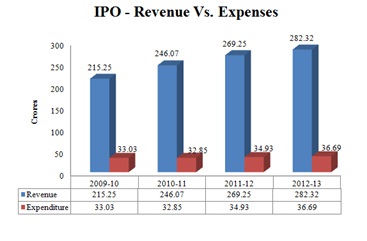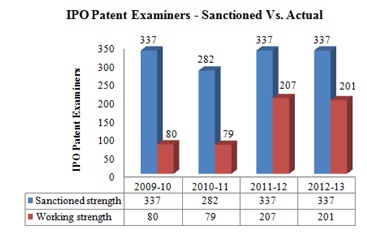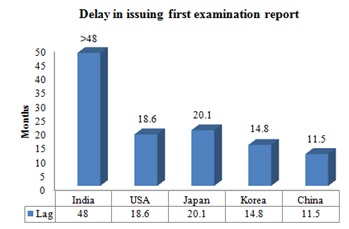Tag Archives: patent fee
Patents (2nd Amendment) Rules, 2020 – Indian patent office updates fee schedule

The Indian Patent Office in its notification dated November 04, 2020 presented Patents (2nd Amendment Rules), 2020. The Amendments have come into force on November 04, 2020.
The amendments bring forth significant changes to the fee schedule. The amended rules quashes the earlier categorization of applicants, for the purposes of fees, into three categories, viz., natural person or startup, small entity and others. According to the new rules, the applicants are now categorized into two categories, viz., natural person or startup or small entity and others.
Since small entity is now included in the same category as natural person and startup, the patent office fee for small entity is reduced and shall be same as the fee for natural person or startup. You may access the new fee schedule here.
Further, sub rule (3) of rule 7 is substituted with the following:
“(3) In case an application processed by a natural person or startup or small entity is fully or partly transferred to a person other than a natural person, startup or small entity, the difference, if any, in the scale of fees between the fees charged from the natural person, startup or small entity and the fees chargeable from the person other than a natural person, startup or small entity in the same matter, shall be paid by the new applicant with the request for transfer.
Explanation— Where a startup or small entity, having filed an application for a patent, ceases to be a startup or small entity due to the lapse of the period during which it is recognized by the competent authority, or its turnover subsequently crosses the financial threshold limit as notified by the competent authority, no such difference in the scale of fees shall be payable.”
The sub rule (3) of rule 7 is amended to include small entity into the same category as natural person and startup. The new rules set forth the following:
- In a scenario where an application is filed by a natural person, a startup or a small entity and is later transferred to a person other than a natural person, a startup or a small entity, the difference in fees due to the change in applicant status shall be paid by the new applicant with the request for transfer.
- In a scenario where an application is filed by a startup or small entity, and during the prosecution of the application, the applicant changes to others, either due to lapse of period which it is recognized by the competent authority, or its turnover subsequently crosses the financial threshold limit as notified by the competent authority, no difference in fee is payable.
Further, the proviso to sub rule (5) of rule 24C is substituted with the following:
“Provided that a request for expedited examination under this rule filed by a startup or small entity shall not be questioned merely on the ground that the startup or small entity, having filed an application for a patent, ceases to be a startup or small entity due to the lapse of the period during which it is recognised by the competent authority, or its turnover subsequently crosses the financial threshold limit as notified by the competent authority.”
According to the above presented proviso, in a scenario where the applicant is a startup or small entity and a request for expedited examination was filed by the applicant and the applicant status changes to others, either due to lapse of period which it is recognized by the competent authority, or its turnover subsequently crosses the financial threshold limit as notified by the competent authority, the request made for the expedited examination is not questionable.
In conclusion, The Patents (2nd Amendment) Rules, primarily tries to reduce the burden of fees incurred by small entity. This move coupled with the expedited examination will encourage small entities to file patent applications for their inventions.
Useful links:
Qualifying as a start-up as per the Indian Patent Rules
How to claim small entity status while filing for patents in Indian Patent Office
We hope this article was a useful read.
Please feel free check our services page to find out if we can cater to your requirements. You can also contact us to explore the option of working together.
Best regards – Team InvnTree
This work is licensed under a Creative Commons Attribution-Non Commercial 3.0 Unported License
The Indian Patent Office – A Cash Cow Left to Starve
India is fast emerging as a major market for research and technology driven products. One of the key indicators of this fact is the number of patent applications filed in India. As per a report from World Intellectual Property Organisation (WIPO), India stood at the 8th position leaving behind Canada in the year 2012, in quantum of patent application filings. With the steady increase in filing of patent applications, the revenue generated by the Controller General of Patents, Designs and Trademarks (CGPDTM), which is commonly known as Intellectual Property Office (IPO), has increased.
The IPO generated revenue of a little over 282.32 crores in 2012-13 compared to 269.25 crores generated in 2011-12. While the revenue has increased at a steady rate in the past few years, the IPO is all set to witness a sharp increase in revenue this financial year, thanks to massive increase in the statutory fee charged by the IPO for various patent filing, prosecution and maintenance activities.
Earlier the IPO had two slabs of statutory fee based on the category of patent applicants or patent owners. The IPO had two categories, i.e. “Natural Persons” (NP), such as individuals, and “Other than Natural Persons” (ONP), such as companies. The fee for the second category was 4 times of what was being charged for the first category. The IPO upon revision of its fee has made three categories, namely, NP, small entity (a legal entity who can be categorized as SME), ONP (a large entity – a legal entity who cannot be categorized as SME). The revised fee charged for small entity is 2.5 times of what is be charged for NP, and the fee for ONP is 5 times of what is charged for NP.
One would realise that the manner in which the fee has been revised by the IPO has been rather smart if one were to look at data closely. The increased fee for NP is negligible considering the minuscule factor of the IPO fee in the entire patenting process. SMEs who were earlier complaining about being charged the same fee as was being charged for large enterprise have been granted relief by offering to charge 2.5 times of NP, as compared to 4 times of NP, as was being done earlier. Large enterprise however will feel the pinch of the increased fee, but they might have hardly any reason to complain considering remarkably high government fee charged by most countries, to which most of them are already exposed.
The IPO has done remarkably well by pleasing the general masses of individuals and SMEs with its pricing structure, while cleverly making a killing, as the IPO generates majority of its revenue from companies who are categorized as large entities, who will now see a 100% increase in fee in most cases.
The IPO while being a cash cow generating impressive revenue, which is now set to increase significantly, spends a small percentage on its operations. In the year 2012-13, the IPO generated 282.32 crores and spent only 36.69 crores on its operations. The story has remained the same over the years.
Even though the IPO generates revenue surplus year after year, it has failed to meet its sanctioned working strength over the years, which has snow balled into an operational crisis. For example, the sanctioned strength of patent examiners stands at 337, while the working strength is 201, falling short by 40%! Shortage of employees can be witnessed across various departments and posts at the IPO.
One of the key indicators of the operational crisis at the IPO is the lag between patent application filing and issuance of patent application examination report by the IPO. At present, the lag is well over 48 months. In other words, a patent applicant has to wait for over 4 years after filing a patent application to receive an opinion on patentability from the IPO. A comparison of such lag in other countries indicates the dismal performance of the IPO.
This operational crisis may not be addressed even if the IPO were to meet its sanctioned working strength. The sanctioned strength is far too less to examine well over one lakh patent applications that have piled up over the years. Even if one were to ignore the pending patent application, the sanctioned strength is not even sufficient to examine patent applications that are currently being received. The IPO received 36247 examination requests in 2012-13, and in order to examine these within one year, each examiner (as per sanctioned strength) on an average will have to examine 107 patent applications in a year, which is not a feasible proposition reinforced by the fact that the IPO with 201 patent examiner clocked an average of examining 61 patent applications per year per examiner.
The IPO has done well in restructuring its fee structure, and patent applicants hope to see similar move by the IPO in restructuring its operations. Restructuring operations may include increasing its workforce and subscribing to initiatives such as Patent Prosecution Highway (PPH), which is a work sharing initiative between major patent offices across the world. Such operational restructuring which is required to make the Indian market more attractive to investors will of course require extensive support from the newly formed central government which has come to power on the “development” plank.
Data for graph
IPO – Revenue Vs. Expenses
|
Year |
Revenue (crores) |
Expenditure (crores) |
|
2009-10 |
215.25 |
33.03 |
|
2010-11 |
246.07 |
32.85 |
|
2011-12 |
269.25 |
34.93 |
|
2012-13 |
282.32 |
36.69 |
IPO Patent Examiners – Sancioned Vs. Actual
|
Year |
Sanctioned strength |
Working strength |
|
2009-10 |
337 |
80 |
|
2010-11 |
282 |
79 |
|
2011-12 |
337 |
207 |
|
2012-13 |
337 |
201 |
Delay in issuing examination report
|
Country |
Lag (months) |
|
India |
48 |
|
USA |
18.6 |
|
Japan |
20.1 |
|
Korea |
14.8 |
|
China |
11.5 |
Sources used for research:
http://ipindia.gov.in/main_text1.htm
http://ipindiaservices.gov.in/ferstatus/
http://www.uspto.gov/dashboards/patents/main.dashxml
http://www.fiveipoffices.org/stats/statisticalreports/2012edition/IP5statistics2012.pdf
I hope you found this article interesting. You may also read our related articles:
- How Long Does it Take to Get a Patent?
- How soon after filing a patent application in India, will it be examined?
Please feel free check our patent services page to find out if we can cater to your patent requirements. You can also contact us to explore the option of working together.
Best regards – Team InvnTree
This work is licensed under a Creative Commons Attribution-NonCommercial 3.0 Unported License
Patent Application Filing in India


 Follow
Follow




